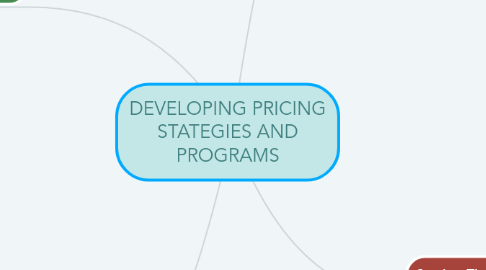
1. Adapting The Price
1.1. Geographical Pricing (cash, countertrade, and barter)
1.1.1. Barter
1.1.2. Compensation deal
1.1.3. Buyback arrangement
1.1.4. Offset
1.2. Price Discounts and Allowances
1.3. Promotional Pricing
1.3.1. Loss-leader pricing
1.3.2. Special event pricing
1.3.3. Special customer pricing
1.3.4. Cash rebates
1.3.5. Low-interest financing
1.3.6. Longer payment terms
1.3.7. Warranties and service contracts
1.3.8. Psychological discounting
1.4. Differentiated Pricing
1.4.1. Customer-segment pricing
1.4.2. Product-form pricing
1.4.3. Image pricing
1.4.4. Channel pricing
1.4.5. Location pricing
1.4.6. Time pricing
2. Initiating and Responding to Price Changes
2.1. Initiating Price Cuts
2.1.1. Low-quality trap
2.1.2. Fragile-market-share trap
2.1.3. Shallow-pockets trap
2.1.4. Price-war trap
2.2. Intiating Price Increases
2.2.1. Delayed quotation pricing
2.2.2. Escalator clauses
2.2.3. Unbundling
2.2.4. Reduction of discounts
2.3. Anticipating Competitives Responses
2.4. Responding to Competitors’ Price Changes
3. Understanding Pricing
3.1. Pricing in a Digital World
3.2. A Changing Pricing Environment
3.2.1. Bartering
3.2.2. Renting
3.3. How Companies Price
3.4. Customer Physhology and Pricing
3.4.1. Preference prices
3.4.2. Price-quality inferences
3.4.3. Price endings
4. Setting The Price
4.1. Step 1: Selecting The Pricing Objective
4.1.1. Survival
4.1.2. Maximum current profit
4.1.3. Maximum market share
4.1.4. Maximum market skimming
4.1.5. Product-quality leadership
4.1.6. Other objectives
4.2. Step 2: Determining Demand
4.2.1. Price sensitivity
4.2.2. Estimating demand curves
4.2.2.1. • Surveys
4.2.2.2. • Price experiments
4.2.2.3. • Statistical analysis
4.2.3. Price elasticity of demand
4.3. Step 3: Estimating Costs
4.3.1. Types of costs and levels of production
4.3.2. Accumulated production
4.3.3. Target costing
4.4. Step 4: Analyzing Competitors’ costs, prices, and offers
4.4.1. Value-priced competitors
4.5. Step 5: Selecting a Pricing Method
4.5.1. Markup pricing
4.5.2. Target-return pricing
4.5.3. Perceived-value pricing
4.5.4. Value pricing
4.5.5. EDLP
4.5.6. Going-rate pricing
4.5.7. Auction-type pricing
4.5.7.1. • English auctions (ascending bids)
4.5.7.2. • Dutch auctions (descending bids)
4.5.7.3. • Sealed-bid auctions
4.6. Step 6: Selecting The Final Price
4.6.1. Impact of other marketing activities
4.6.2. Company pricing policies
4.6.3. Gain-and-risk-sharing pricing
4.6.4. Impact of price on other parties
